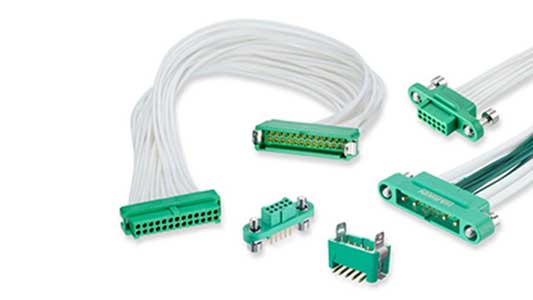Harwin announces that its high-reliability Gecko connectors, which have been integrated into a research nanosatellite, have been successfully launched and ejected into low Earth orbit (LEO), and, after the deployment of its subsystems, remain fully operational.

Momentus, the U.S. commercial space company, recently announced that all customer payloads had been deployed from its Vigoride-6 Orbital Service Vehicle launched in April 2023 aboard the SpaceX Transporter-7 mission. One of these payloads is the VIREO CubeSat designed and manufactured by Hungary’s aerospace company, C3S. The unique deployment involved spending over a month on the carrier to determine the optimal orbit before seamlessly proceeding with its Earth observation experiments supported by onboard artificial intelligence (AI).
The Gecko connectors connect the HEDVIG (High-reliability Embedded Device for Visual Imaging Goals) payload (the cameras) with the Integrated Payload Controller and the AIOB-X core. Engineers at C3S selected the Gecko 1.25mm pitch connectors in preference to Micro-D connectors of a similar form factor with but higher current ratings, which were needed to bridge between the outputs from the payload and payload controller.
The cameras capture images of the Earth, and the AIOB-X core runs C3S’s partner’s AI code, which aims to demonstrate the technology of onboard pre-selection of the photos taken. It detects the images that are covered by clouds and deletes them so that only the photos that have helpful information about the Earth’s surface are downloaded. This helps save precious bandwidth in the company’s satellite-to-ground communication.
The glass-filled thermoplastic housings of the Gecko connectors make them weigh much less than the comparable Micro-D, while still having the necessary insulation characteristics. Considering CubeSats typically weigh less than 1.33 kg (3 lbs) per U, saving weight was a top priority for the C3S engineers. These housings are able to cope with exposure to extreme temperature levels spanning from -65°C to +150°C, another decisive factor while the satellite orbits between direct exposure to the sun and the shadow of the Earth. Another important factor, the Gecko connectors exhibit excellent outgassing properties, which helps ensure the cleanliness of the optics of the payload. In addition, the 4-finger design used for the beryllium copper contacts in the Gecko connectors ensures strong resilience to shock and vibration during launch.
“Harwin’s Gecko family is an ideal New Space solution for nanosatellite systems, bringing large-satellite reliability into the nanosatellite world at an affordable cost,” says László Bagó, Aerospace Hardware & System Engineer of C3S. “They can carry a substantial current at 1.25mm pitch, have very low outgassing parameters (which can be crucial when dealing with optics, for example), and one can choose between a wide variety of fixing and shielding options, as well as cable assemblies.”













